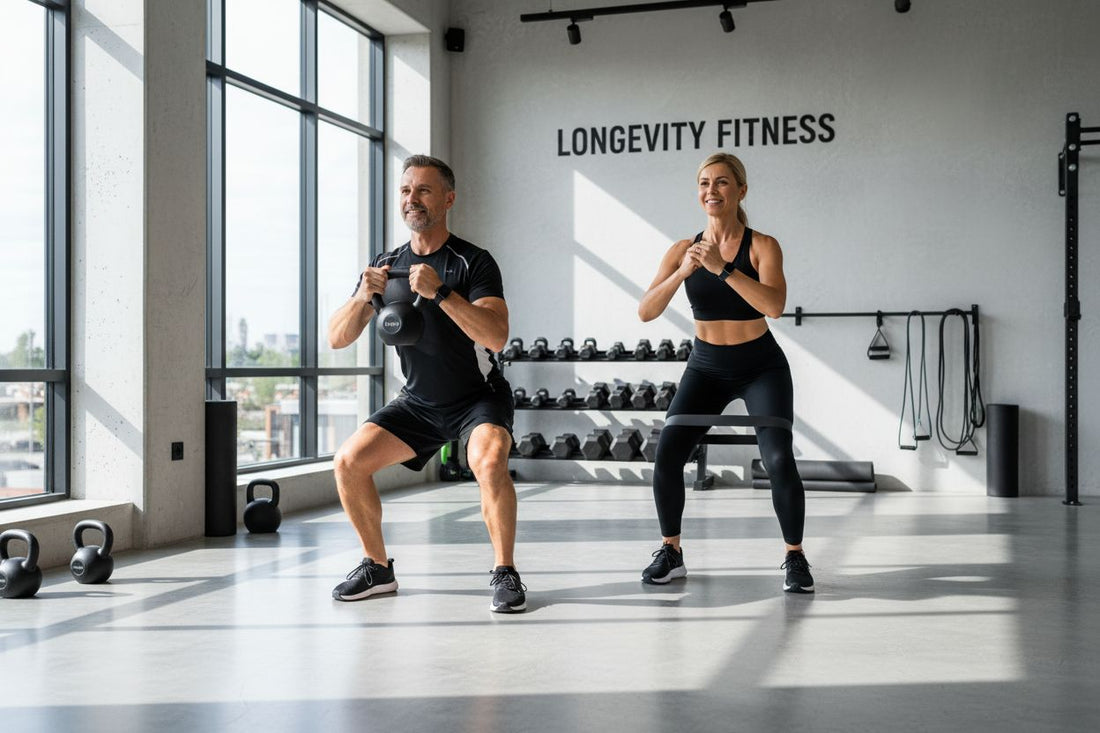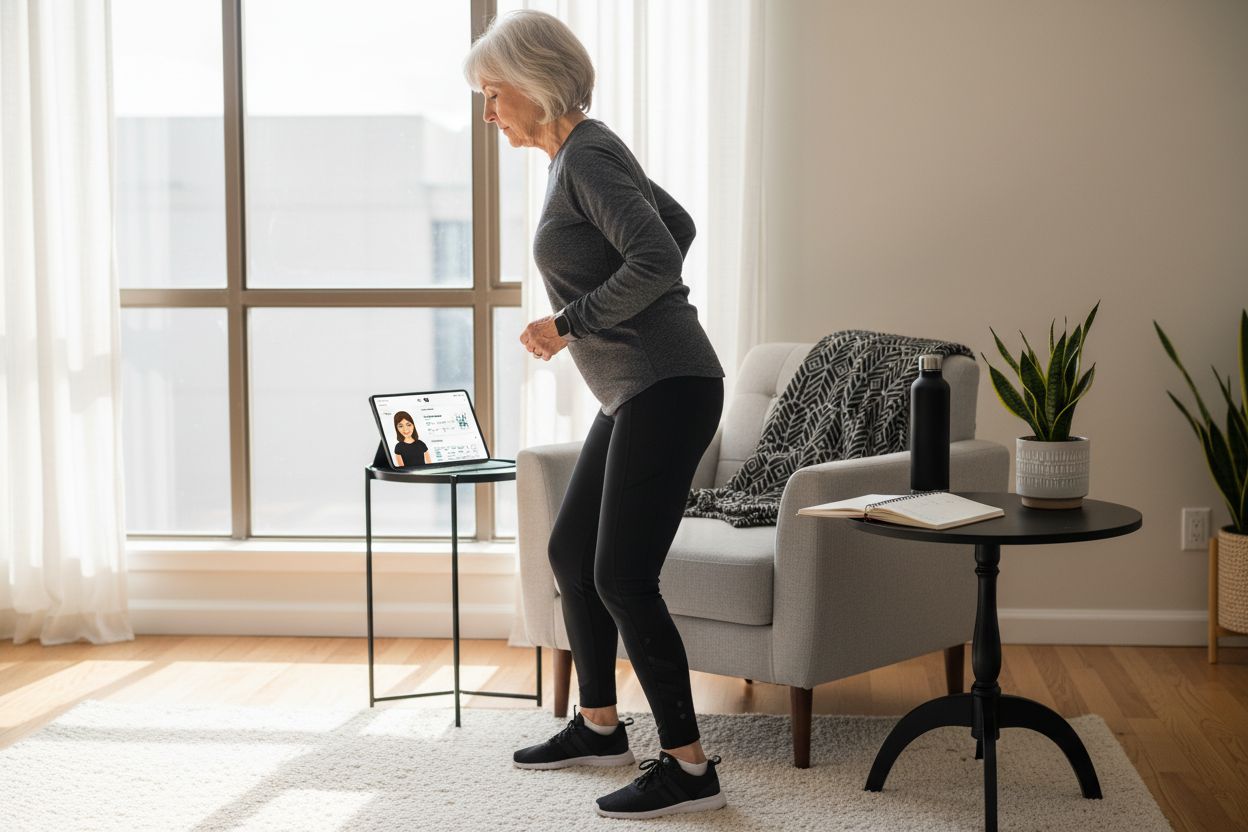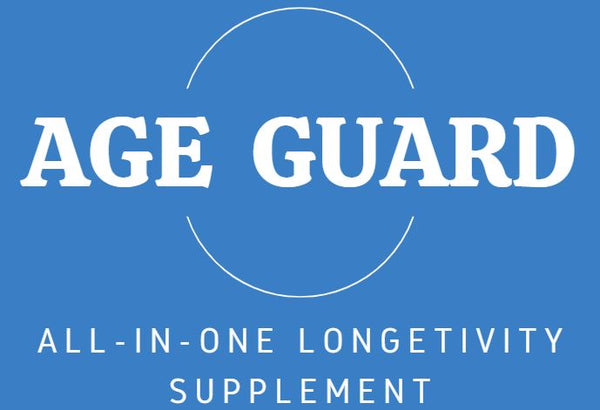
Workout Routine for Longevity: Boost Energy and Cellular Health
Share
Did you know that regular strength training can reduce your risk of early death by up to 23 percent? Staying active is not just about looking fit, it is directly tied to how well you age and how long you stay independent. Understanding the right steps for a smart and sustainable workout plan helps you move more easily, reduce aches, and gain steady energy every day.
Quick Summary
| Key Point | Explanation |
|---|---|
| 1. Assess your health and mobility first | Start with a self-assessment of your physical condition to create a personalized fitness plan. |
| 2. Choose effective exercises for longevity | Select exercises like brisk walking and bodyweight movements that improve multiple fitness aspects with low injury risk. |
| 3. Create a balanced weekly workout plan | Design a schedule targeting both aerobic and strength training while allowing for recovery. |
| 4. Consider supplementation alongside exercise | Use supplements like omega-3 and vitamin D to support your health goals, but consult a healthcare professional first. |
| 5. Monitor and adjust your workout plan | Track your progress and be flexible with your routine to ensure continuous improvement and adaptation. |
Table of Contents
- Step 1: Assess Personal Health And Mobility
- Step 2: Select Optimal Exercises For Longevity
- Step 3: Schedule Balanced Weekly Workout Sessions
- Step 4: Combine Supplementation With Exercise Routine
- Step 5: Monitor Results And Adjust Your Plan
Step 1: Assess personal health and mobility
When starting a workout routine focused on longevity, understanding your current physical condition is crucial. This first step helps you create a personalized approach that matches your actual fitness level and prevents potential injuries.
Begin by performing a comprehensive self assessment that goes beyond just checking your weight or basic fitness. According to a 2016 physiological review, viewing exercise as a foundational supplement for healthy aging means carefully evaluating your mobility and functional health capabilities. This means looking at how well you can perform everyday movements like walking, bending, stretching, and maintaining balance.
Start with some simple mobility tests you can do at home.
 Stand up from a seated position without using your hands. Can you do this smoothly? Try walking heel to toe in a straight line. Notice any wobbling or instability? These basic tests reveal a lot about your current physical condition.
Stand up from a seated position without using your hands. Can you do this smoothly? Try walking heel to toe in a straight line. Notice any wobbling or instability? These basic tests reveal a lot about your current physical condition.
Assess your range of motion by doing gentle stretches and observing any restrictions or discomfort.
Pro Tip: Use a notebook or digital app to track your initial mobility assessment results. This creates a baseline for tracking future improvements.
Technology can be a helpful ally in this process. As a post-hoc randomized trial found, older adults using tablet-based apps with coaching sustained exercise adherence averaging three days per week. Consider using fitness tracking apps or wearable devices that can help monitor your progress and provide objective measurements of your physical capabilities.
Remember that this assessment is not about judgment but about understanding where you are right now. Your next step will involve designing a workout routine that gradually builds strength and flexibility based on these initial findings.
Step 2: Select optimal exercises for longevity
Now that you have assessed your current mobility, it is time to choose exercises that will support your long term health and vitality. The goal here is to select movements that improve multiple aspects of your physical fitness while minimizing potential strain or injury.
According to an expert ranking, some top exercises for longevity include brisk walking, squats, stair climbing, and sled pushes. These activities deliver comprehensive benefits by targeting cardiovascular endurance, muscle strength, balance, and metabolic health. Think of them as efficient multitasking workouts that help your body stay strong and resilient.
A wellness coach recommends six equipment free ‘animal flow’ style movements that can dramatically improve your overall fitness. These include the beast hold, bear crawl, deep squat to overhead rotation, crab walk, inchworms, and lizard crawl. These movements are fantastic because they engage multiple muscle groups simultaneously while improving mobility, coordination, and building functional strength.
Pro Tip: Start with low repetitions and focus on proper form rather than speed or intensity. Quality matters more than quantity when building a sustainable fitness routine.
Learn more about longevity exercise strategies to complement these foundational movements. Remember that consistency is key. Choose exercises you genuinely enjoy and can realistically perform several times a week.
Here’s a comparison of top longevity exercises and their key benefits:
| Exercise | Main Benefits | Equipment Needed |
|---|---|---|
| Brisk Walking | Cardiovascular health Low impact |
None |
| Squats | Leg strength Balance |
None |
| Stair Climbing | Endurance Heart health |
Stairs |
| Sled Pushes | Full-body strength Metabolism |
Sled/weighted equipment |
| Beast Hold | Core strength Stability |
None |
| Bear Crawl | Coordination Shoulder mobility |
None |
| Deep Squat to Overhead Rotation | Mobility Flexibility |
None |
| Crab Walk | Glutes Shoulders |
None |
| Inchworms | Flexibility Body awareness |
None |
| Lizard Crawl | Mobility Full-body activation |
None |
The next step will involve creating a structured workout plan that integrates these movements safely and progressively into your routine, ensuring steady improvement without overwhelming your body.
Step 3: Schedule balanced weekly workout sessions
With your mobility assessed and optimal exercises selected, creating a strategic weekly workout plan becomes crucial for sustainable fitness and longevity. Your goal is to design a schedule that challenges your body while allowing adequate recovery and preventing burnout.
Current health guidelines recommend a comprehensive approach targeting 150 to 300 minutes of moderate or vigorous aerobic activity combined with 2 to 3 strength training sessions per week. This balanced strategy ensures you are building cardiovascular endurance, muscle strength, and overall functional fitness.
A sample longevity workout plan might look like this: three days of moderate aerobic activities like brisk walking or swimming, two strength training sessions focusing on full body movements, and two active recovery or light mobility days. The key is creating variety that keeps your body challenged without exhausting it.
Pro Tip: Listen to your body and be flexible. If you feel overly fatigued, swap an intense workout for a gentler movement session.
Explore our comprehensive longevity diet checklist to complement your workout routine. Nutrition plays a significant role in supporting your fitness goals and overall cellular health.
Your next step will involve tracking your progress and making incremental adjustments to ensure your workout plan remains engaging and effective for your long term wellness journey.
![]()
Step 4: Combine supplementation with exercise routine
Now that you have established a solid workout plan, strategic supplementation can help amplify your longevity and cellular health goals. Think of supplements as targeted support that complements your exercise routine, providing additional nutrients to optimize your body’s performance and recovery.
A groundbreaking clinical trial called Do-Health revealed fascinating insights into supplementation. Researchers found that daily omega-3 supplements taken over three years could actually slow biological aging. What makes this even more exciting is that the benefits were significantly enhanced when combined with vitamin D and regular exercise. This suggests that supplements work best as part of a holistic approach to wellness.
Emerging research is particularly promising for mitochondrial health. Studies on Urolithin A supplementation show remarkable potential for supporting endurance and recovery in older adults. By enhancing mitophagy (the process of cleaning out damaged mitochondria), this supplement could be a powerful ally in your longevity workout strategy.
Pro Tip: Always consult with a healthcare professional before starting any new supplement regimen to ensure it aligns with your individual health needs.
Discover more about longevity nutrition strategies that can support your exercise and supplementation approach. Remember that supplements are most effective when integrated thoughtfully with a balanced diet and consistent exercise routine.
Your next step will involve monitoring how these additional nutritional supports interact with your workout plan and tracking your overall energy levels and recovery.
Step 5: Monitor results and adjust your plan
Tracking your progress is the critical final step in creating a sustainable longevity workout routine. Think of this as your personal fitness dashboard that helps you understand how your body responds to exercise, nutrition, and supplementation.
Recent technological advances have made monitoring easier than ever. A 2024 study utilizing wearable sensors demonstrated remarkable accuracy in evaluating exercise performance. These innovative tools can help you track not just quantity but quality of movement, providing insights into your form and workout adherence right from the comfort of your home.
Nutrition plays a crucial role in this tracking process. A systematic review highlighted the importance of comprehensive monitoring beyond just exercise. For optimal muscle protein synthesis, researchers recommend tracking protein intake (20-25g post-workout and before sleep), sleep quality, and strength progression. This holistic approach ensures you are not just moving more but improving more effectively.
Pro Tip: Take progress photos, measurements, and keep a detailed workout journal. Numbers tell a story, but how you feel matters most.
Learn more about longevity boosting strategies to complement your tracking efforts. Be prepared to make incremental adjustments. A perfect plan is not about rigidity but responsive adaptation.
Your fitness journey is a continuous conversation with your body. Listen carefully, track thoughtfully, and remain flexible in your approach.
Power Up Your Longevity Journey with Advanced Cellular Support
You have taken the first step by learning how to assess your health, choose the right exercises, and track your progress to boost energy and cellular vitality. Yet, as highlighted in the article, challenges like slow recovery, fatigue, and the need for stronger cellular health often stand in the way of optimal results. Many readers want to stay active, but aging cells and inconsistent energy can derail even the best workout routine.

Bring your fitness and wellness strategies together with targeted support. Age Guard at MyAgeGuard.com is specifically designed to amplify your energy and cellular health from the inside out. Our clinically-backed formula includes NMN, collagen, spermidine, and potent antioxidants in research-supported doses, helping you bridge the gap between physical activity and true longevity. Explore our detailed ingredients and science page to see why Age Guard is trusted by health-focused individuals like you. Visit MyAgeGuard.com and claim your exclusive offer today to accelerate your progress at every stage of your anti-aging journey.
Frequently Asked Questions
How do I assess my mobility for a longevity workout routine?
To assess your mobility, perform simple tests like standing up from a seated position without using your hands and walking heel to toe in a straight line. Take note of any difficulties or imbalances, and track your observations to guide your future workouts.
What types of exercises should I include in my workout routine for longevity?
Include exercises that promote cardiovascular health, strength, and mobility, such as brisk walking, squats, and animal flow movements. Start with low repetitions focusing on form, and gradually increase the intensity as you feel more comfortable.
How can I schedule my workout sessions to maximize overall health benefits?
Aim for a weekly plan that includes 150 to 300 minutes of moderate aerobic activity combined with 2 to 3 strength-training sessions. For example, schedule three days of brisk walking or swimming, two days of strength training, and two active recovery days each week.
What role does supplementation play in my workout routine for longevity?
Supplementation can provide additional nutrients to support your workout regimen and overall cellular health. Consult with a healthcare professional to determine which supplements are suitable for you, and integrate them thoughtfully alongside exercise and nutrition.
How should I monitor my progress in my longevity workout routine?
Use a workout journal or digital tracking tool to log your exercises, energy levels, and nutritional intake. Regularly review your progress and make adjustments to your plan as needed to ensure continuous improvement over time.
What adjustments should I make if I feel fatigued during my workouts?
If you feel fatigued, listen to your body and consider replacing an intense workout with a lighter movement session or an active recovery day. Prioritize rest and adjust your routine to prevent burnout, ensuring that your workouts remain enjoyable and sustainable.
